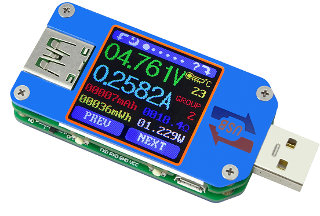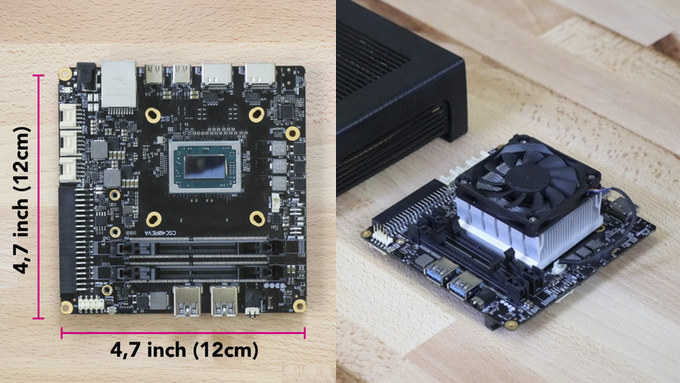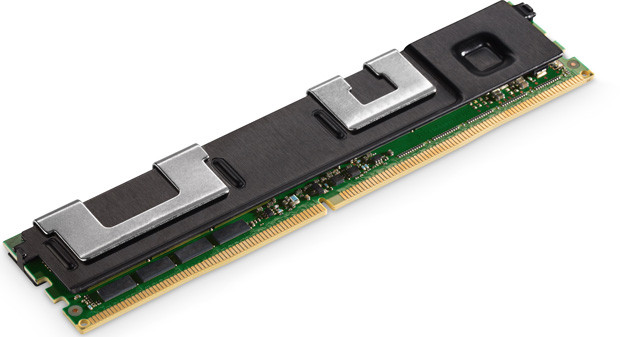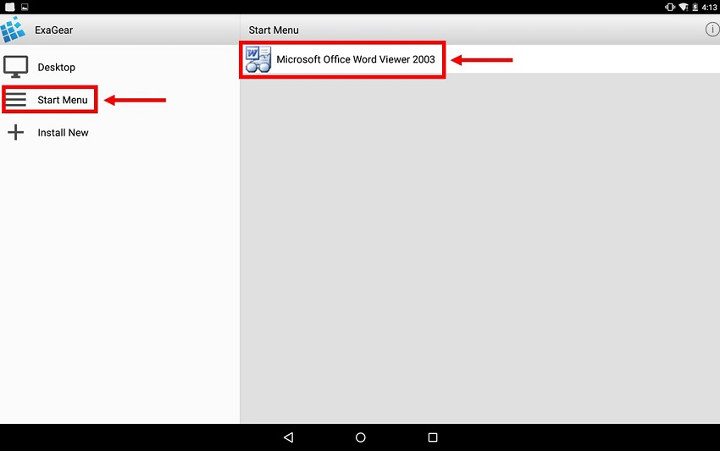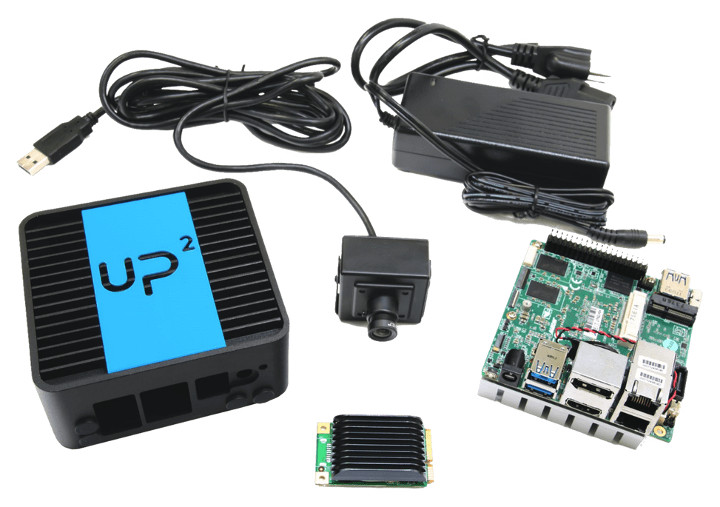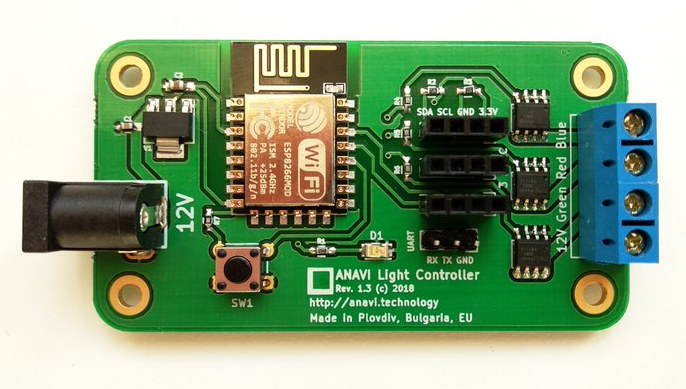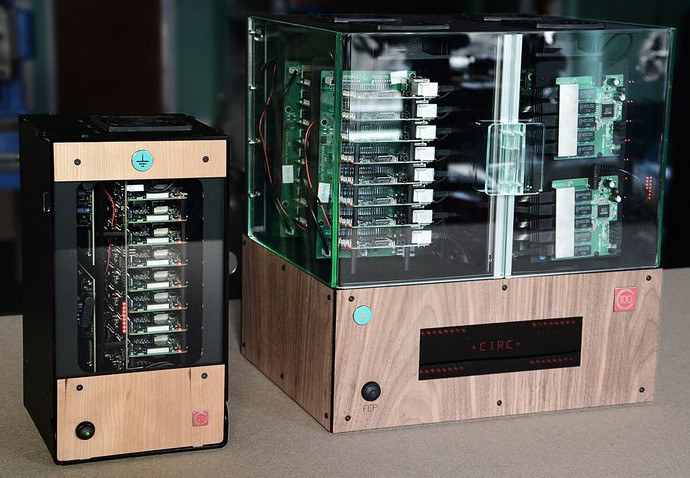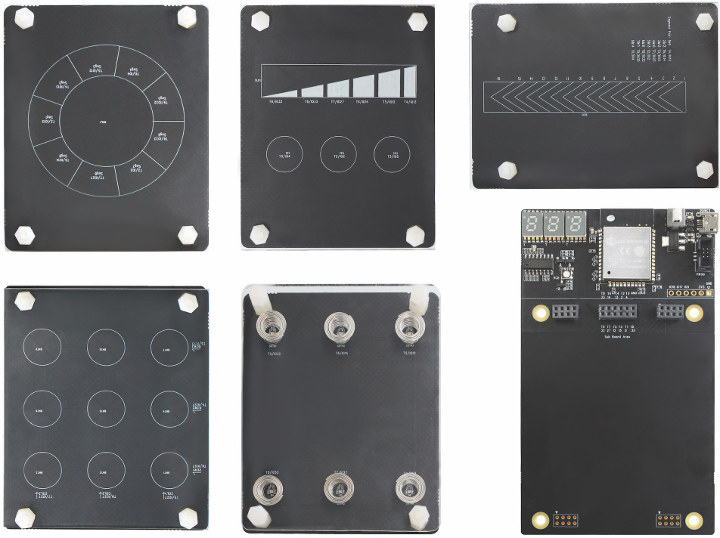Products such as USB Charger Doctor are good way to test your USB chargers or cables, as well as checking the power consumption of USB powered development boards. You just plug them into a USB port, and connect the load, and you’ll see the real-time voltage and current shown on an LED display. Those do the job, but I’ve just been made aware of UM25C USB meter tester that improves a lot on the concept with a dot matrix display capable of showing charts, and Bluetooth connectivity to send the data to Android or Windows devices. UM25C specifications: Display 1.44″ color LCD display 0-5 brightness setting Auto screen off time – 0 to 9 minutes Refresh rate – 2Hz Measurement Range & Accuracy Voltage – 4-24.000V ±0.5‰ + 2digits Current – 0-5.0000A ±1‰ + 4 digits Capacity – 0-99999mAh Energy accumulation – 0-99999mWh Load impedance – 0.8Ω-9999.9Ω Time range – […]
UDOO BOLT AMD Ryzen Embedded V1000 SBC Goes for $229 and Up (Crowdfunding)
While Intel has been outing low cost and low power processors with less than 10W TDP over the years with their Bay Trail, Cherry Trail, Braswell, Apollo Lake, and now Gemini Lake processors, AMD has not really ventured into the low power space, and the latest announcements about 10-12W processors was for their Embedded G-Series J Family, which I have not seen in many products. More recently, the company introduced Ryzen Embedded V1000 family of processors with 4 to 8 Zen cores, 4K support, 10 GbE interface, and more with a TDP of 12 to 25W for Ryzen Embedded V1202B & V1605B dual / quad core processors. The latest x86 UDOO board – dubbed UDOO BOLT – will be one of the rare AMD development boards available on the market with pricing starting at $229. Two versions of the board will be available: UDOO BOLT v3 with Ryzen Embedded V1202B, […]
Intel Launches Optane DC Persistent Memory Compatible with DDR4 DIMMs
Intel and Micron jointly announced 3D Xpoint technology in 2015 that promised to be 1,000 times faster and endurant than NAND flash, and 10 times denser than conventional DRAM. Products were launched in 2017 under the Optane brand with somewhat lower specifications starting with enterprise PCIe SSDs, followed by Optane M.2 cards, and Optane PCIe SSDs for the consumer market which do improve performance for very specific tasks. But beside storage devices, Intel also planned to launch Optane memory that fits into RAM slot, and they’ve finally done that with their Optane DC Persistent Memory fitting into DDR4 DIMMs with capacity ranging from 128GB to 512GB. The Optane DC Persistent Memory modules are made for the datacenter, and will be supported by the next generation of Intel’s Xeon server platforms. The module are sampling now with mass production planned for later this year, but only to select customer. Broad availability […]
Run Windows Programs on Android Devices with ExaGear Windows Emulator App
In recent years, there have been efforts to run apps on operating systems they were not designed to run on. For example, Microsoft added Windows Subsystem for Linux to support Linux command line programs in Windows 10, and Google added the ability to run Android apps to Chrome OS, and is working on Linux programs support for Chromebooks. ExaGear has been providing software to run Windows programs in Linux, including on the Raspberry Pi boards, for several years, but they also published Exagear Windows Emulator – a paid Android app – to run Windows programs in any Android device with appropriate hardware specifications. The virtual machine works on Arm Android devices with with 32-bit x86 Windows applications. You just need to connect a keyboard and a mouse. 64-bit x86 applications and and x86 Android devices are not supported. Some of the supported apps and games include Caesar III, Heroes of […]
UP AI Edge Enables Artificial Intelligence on the Edge with Intel CPU, GPU, VPU and FPGA Solutions (Crowdfunding)
Back in February of this year, AAEON introduced their UP AI Edge family of products with UP AI Core mini PCIe card based on Intel Movidius Myriad 2 VPU (Vision Processing Unit), and UP Core Plus board powered by a choice of Apollo Lake processors, and supporting AI Plus FPGA and AI Net Ethernet expansion boards. The company has now launched a Kickstarter campaign for those boards, and added several new products including Vision Plus with three Movidius Myriad 2 VPUs, AI Core M2 with two Movidius Myriad2 VPU in M.2 2280 form factor, as well as the Up Squared AI vision development kit for OpenVINO toolkit. I won’t go through the products announced in February, but let’s have look at the new boards and cards. Vision Plus Board Vision Plus Specifications: VPU – 3x Intel Movidius Myriad 2 VPUs with 512 MB DDR Connectivity – 1x Gigabit Ethernet USB […]
ESP8266 based ANAVI Light Controller can be Programmed with Home Assistant or the Arduino IDE (Crowdfunding)
ANAVI Technology previously launched a Light pHAT allowing for RGB Light strip connection to Raspberry Pi boards, and during my review of ANAVI Light pHAT with Raspberry Pi 2, it did the job, but if that’s all you want to do, the Raspberry Pi board is clearly oversized & overpowered for the job. So Leon ANAVI got back to the drawing board and designed a similar open source hardware board – called ANAVI Light Controller – with an built-in ESP8266 module that removes the need for a fully fledged Linux board. ANAVI Light Controller specifications: Wireless Module – ESP8266MOD module based on ESP8266 Tensilica L106 32-bit processor Connectivity – WiFi 802.11 b/g/n Expansion Terminal block for 12 V RGB LED strip 3x I2C headers for sensors Debugging – UART header Misc – Button Power Supply – 12 V via power barrel jack Dimensions – 75 mm x 40 mm Certification […]
Circumference Datacentre-in-a-Box Features up to 32 Raspberry Pi 3 B+ Managed by a UDOO x86 Ultra Board (Crowdfunding)
We’ve previously seen several clusters made of Raspberry Pi boards with a 16 RPi Zero cluster prototype, or BitScope Blade with 40 Raspberry Pi boards. The latter now even offers solutions for up to 1,000 nodes in a 42U rack. Circumference offers an other option with either 8 or 32 Raspberry Pi 3 (B+) boards managed by UDOO x86 board acting as a dedicated front-end processor (FEP) that’s designed as a “Datacenter-in-a-Box”. Key features and specifications: Compute nodes – 8x or 32x Raspberry Pi 3 B+ boards for a total of 128x 64-bit 1.4 GHz cores max Backplane MCU – Microchip ATmega1280 8-bit AVR microcontroller Serial Comms – FTDI FT4232 quad-USB UART Switched Mode Power Supply Units (SMPSUs): 8x / 32x software controlled (one per compute node) 1x / 4x always-on (microcontroller) HW monitoring: 8x / 32x compute node energy 2x / 8x supply voltage 2x / 8x temperature Remote […]
ESP32-Sense Kit Lets You Experiment with ESP32 Touch Interface
Beside support for Bluetooth, one the other extra benefits of Espressif ESP32 over ESP8266 is the presence of a touch interface in the newer processor. If you are interested in that specific features, Espressif Systems has worked on ESP32-Sense kit that provides a main board with ESP32, and several touch enabled daughter boards. Board descriptions in the kit: Motherboard with ESP32 module (ESP-WROOM-32), a 3-digit display unit, a debug unit, USB port for power, switches, an RGB LED, and expansion headers. 5 daughterboard: linear slider duplex slider wheel slider matrix buttons spring buttons. Developers could even design and add their own daughterboards to connect to the motherboard’s touch header. A good way to get started with your own board is to check out ESP32 Sense Kit reference design files with Cadence/OrCAD Capture V16.6 schematics, and Mentor Graphics/Pads VⅩ.2 PCB layout files. But if you are just interested in the software […]


